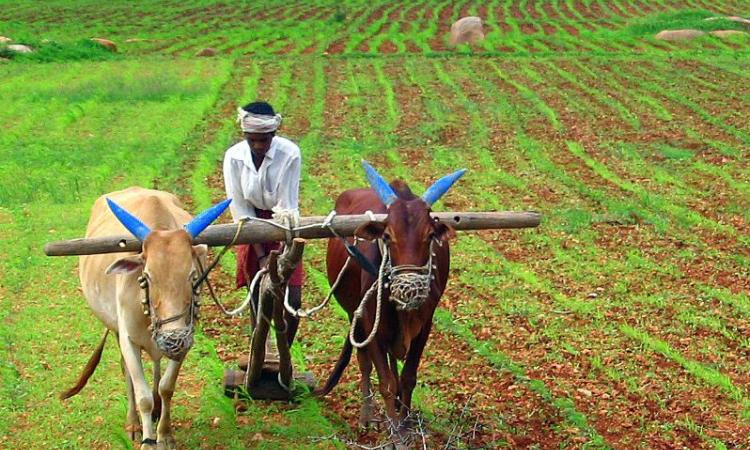
Traditional mixed farming systems are transitioning towards intensive farming systems in India, which are based on high use of land and water with a focus on specialised crop or livestock production for markets.
While intensification of agriculture in India has increased food self-sufficiency, it has also led to rapid changes in agricultural land use and affected water availability and use. Landscape changes have also affected water availability in the country due to erratic rainfall patterns, high runoff, low groundwater infiltration, and increased groundwater use for irrigation, particularly in dryland environments.
Sixty percent of India is classified as dryland, i.e. arid and semi-arid where water is already scarce. The continued growth of intensive agricultural production in these regions coupled with growing water demand from population growth and industrial sectors, is likely to result in severe water scarcity in India in the near future
This paper titled 'The impact of intensive farming systems on groundwater availability in dryland environments: A watershed level study from Telangana, India' published in Current Research in Environmental Sustainability discusses the findings of a study that aims to understand the impact of intensified agriculture on the availability of groundwater resources in a dryland watershed in Telangana, India.
The study focuses on the transition of farming systems, assessment of their economic performance and analysis of their vulnerability to climate change in two watersheds namely the Rangareddy and Nagarkurnool districts in the southern state of Telangana, India.
The two watersheds fall in a drought-prone area where the annual rainfall is 500–700 mm, distributed around the South-West (June to September) and the North-East (October to November) monsoon seasons. The aridity index of the region is 0.2 ≤ AI. The study region is dominated by crystalline basement rock characterised by low porosity with a lower capacity to store water, which leads to frequent borewell failures in the region.
The study
Three farming systems namely, crop without livestock system (CWL; 48 percent of households), the crop-dairy system (CD; 38 percent of households) and the crop with small ruminant system (CSR; 6 percent of households) were compared for the study. The study looked at water use in different farming systems and the water balance at different scales (i.e. farming system, village, or watershed), to gain an understanding of water vailability and use in the region.
The study found that:
Water use in the farming systems was high
Among the three systems, the crop dairy system used the highest water (19,668 m3 /HH/y) compared to the crop with small ruminants (8645 m3 /HH/y) and crop without livestock (4403 m3 /HH/y) systems.
The livestock systems used more water than the crop without livestock system, mainly to produce green fodder in the crop dairy system and for the cultivation of commodity crops such as groundnut in the CSR system. Groundnut production in the crop with small ruminant system complemented small ruminant production, since crop residues were used as feed. However, green fodder production in the crop dairy system dedicated feed crop for dairying only, which increased the water footprint of the system.
Groundwater abstraction rate exceeded recharge rate in the region
The groundwater abstraction rate by all farming systems in the region was more than the recharge rate of the watershed, resulting in a water deficit. The crop dairy and the crop without livestock systems were the largest water users because of the high water demand and also because they constituted 86 percent of the households in the region.
Poor farming practices further exploited the available water resources
The over utilisation of water in the region was caused due to a high focus on cultivating non-dryland crops such as rice, cotton, fruits, and vegetables, which increased the use of water and also reduced the availability of crop residues for livestock.
The shortage of crop residues made the crop dairy system cultivate green fodder and invest (up to 80 percent of farming costs) in fodder from external markets. Hence, the reduced availability of crop residues increased water use and contributed to high virtual water use for fodder production outside the region.
Increasing farm intensification and specialisation reduced crop rotation and led to sub-optimal integration of crop-livestock production within and between farms in the region. In the crop dairy systems, some households had large herd sizes with many replacement animals, i.e. calves and heifers. Inspite of the benefits such as manure availability or income from the sale of animals), a large number of animals required more water resources.
Households also adopted management practices that increased the need for water such as use of inorganic fertilisers due to the lack of manure, which caused soil hardening and loss of soil carbon levels, and reduced the soil’s water holding capacity, necessitating more irrigation.
Free power supply in the region also promoted unfavourable irrigation practices by farmers, such as flood irrigation when not needed.
Water scarcity led households to limit crop production to one season per year as borewells in the region did not function across the year and over-utilisation of water led to groundwater scarcity in the region. Another significant factor that caused groundwater depletion was high runoff due to a low vegetation cover.
The paper recommends promotion of agro-ecologically suitable farming strategies, improvement in the existing technological options and introduction new policies that reduce the over use of water resources for sustainable agricultural production in the region.
/articles/intensive-farming-practices-and-groundwater-use-telangana